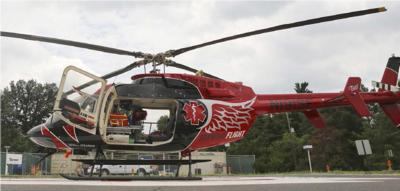Conclusion: Helicopter Air Ambulance Operator’s Poor Safety Management, Inadequate Oversight Led to Fatal Crash
An air ambulance helicopter crash that killed three crew members was caused by the operator’s “inadequate management of safety,” which led to a pilot departing on a flight without a thorough preflight weather evaluation, the National Transportation Safety Board announced in a public meeting Tuesday.

The Bell 407 helicopter air ambulance, operated by Survival Flight, crashed in Zaleski, Ohio, Jan. 29, 2019, in deteriorating weather while enroute to pick up a patient for transport from one hospital to another. All three occupants – the pilot, flight nurse and flight paramedic – were killed in the accident.
“This accident was all but invited by the actions and culture of Survival Flight,” said NTSB Chairman Robert L. Sumwalt. “Unfortunately, we have seen yet another case of how a poor safety culture can lead to tragedy.”
Radar and other data sources showed the helicopter, which was only certified to operate in visual flight conditions, flying mostly between 900 and 1,700 feet above ground level as it traversed the first of two bands of snow showers. During a second encounter with snow several minutes later, which would have significantly reduced visibility, the pilot made a left 180° turn in what investigators said was likely an effort to reverse course to an area of better visibility. For unknown reasons, the pilot failed to maintain altitude while making the turn and the helicopter collided with trees and then terrain in a heavily wooded area.

In post-accident interviews, current and former Survival Flight employees said there was pressure from management to operate flights in challenging conditions and to take flights that other helicopter air ambulance services turned down due to inclement weather.
The NTSB found pilots and operations staff of Survival Flight routinely failed to comply with preflight risk assessment procedures because such noncompliance had become “normalized” by Survival Flight’s deficient safety culture.
The NTSB also said the Federal Aviation Administration’s inadequate oversight of Survival Flight’s risk management program and the FAA’s failure to require helicopter air ambulance operators to have safety management systems contributed to the accident.
Investigators said the safety risks that existed at Survival Flight would likely have been identified and mitigated by a properly run safety management system, which could have prevented this crash.
In 2009 the NTSB recommended the FAA require all helicopter air ambulance operators to have safety management systems. The FAA didn’t adopt the recommendation – and the NTSB subsequently identified the lack of safety management systems as a factor in a string of additional fatal crashes. In 2016 the NTSB recommended that all on-demand aircraft operators, including helicopter air ambulances, be required to have safety management systems. That recommendation, which was reiterated three times between 2016 and 2020, was reiterated for a fourth time Tuesday.
“We keep asking that safety management systems be required of Part 135 operators because we keep seeing crashes the systems are designed to prevent,” said Sumwalt. “This has to change, and it is past time for the FAA to implement our recommendation.”
Improving the safety of Part 135 operations is on the NTSB’s Most Wanted List.
As a result of the investigation the NTSB made 14 new recommendations to the FAA, the National Weather Service and Survival Flight. The NTSB also reiterated four other recommendations previously issued to the FAA.
 ANN's Daily Aero-Term (05.17.24): Very High Frequency
ANN's Daily Aero-Term (05.17.24): Very High Frequency ANN's Daily Aero-Linx (05.17.24)
ANN's Daily Aero-Linx (05.17.24) ANN FAQ: Submit a News Story!
ANN FAQ: Submit a News Story! Classic Aero-TV: ANN Visits Wings Over The Rockies Exploration Of Flight
Classic Aero-TV: ANN Visits Wings Over The Rockies Exploration Of Flight Airborne Affordable Flyers 05.16.24: PRA Runway, Wag-Aero Sold, Young Eagles
Airborne Affordable Flyers 05.16.24: PRA Runway, Wag-Aero Sold, Young Eagles




